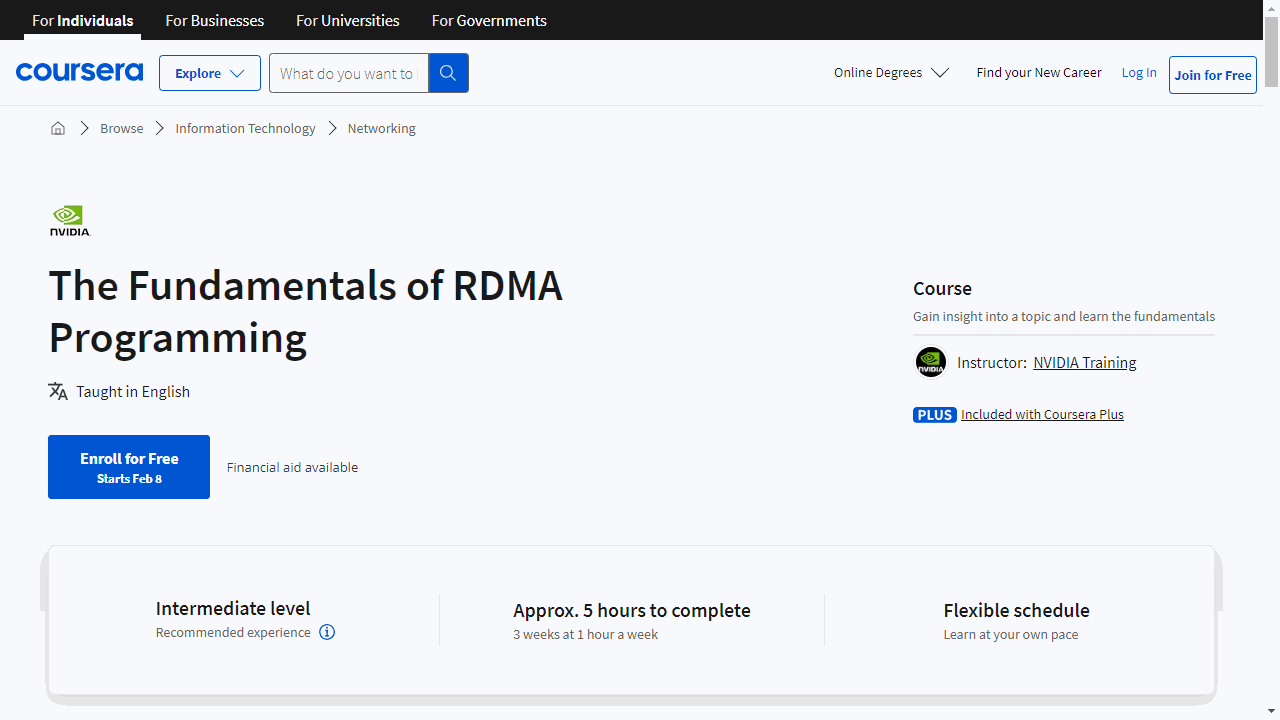CUDA, short for Compute Unified Device Architecture, is a parallel computing platform and programming model created by NVIDIA.
It allows developers to utilize the power of GPUs for general-purpose computing tasks, significantly accelerating computationally intensive applications.
By learning CUDA, you can unlock the potential of parallel processing, boosting the performance of your applications in areas like scientific computing, machine learning, and data analysis.
Finding the right CUDA course on Coursera can be challenging.
You’re looking for a program that’s comprehensive, engaging, and taught by experts, while also catering to your learning style and goals.
For the best CUDA course overall on Coursera, we highly recommend the GPU Programming Specialization offered by Johns Hopkins University.
This specialization provides a deep dive into CUDA, equipping you with the skills to develop high-performance applications leveraging the power of GPUs.
The courses cover everything from the fundamentals of concurrent programming and CUDA basics to advanced topics like scaling your applications and utilizing CUDA’s advanced libraries.
This program is perfect for anyone wanting to master CUDA and harness its power for various applications.
While this specialization is our top pick, there are other excellent CUDA courses available on Coursera.
Keep reading to discover other options, tailored to specific learning levels and career goals.
GPU Programming Specialization
Provider: Johns Hopkins University
This series of courses equips you with the skills needed for efficient data processing and complex problem-solving using GPUs.
Let’s explore the essence of each course and how it can propel your expertise.
The journey begins with “Introduction to Concurrent Programming with GPUs.”
This course lays the foundation for concurrent programming, teaching you to develop software in Python and C/C++ that processes data in parallel.
You’ll gain a basic understanding of GPU hardware and software architectures, setting the stage for mastering CUDA, an essential skill in data science and machine learning.
Moving forward, “Introduction to Parallel Programming with CUDA” elevates your programming skills.
You’ll learn to harness the CUDA framework to create software that operates on both CPUs and Nvidia GPUs.
Transforming sequential CPU algorithms into CUDA kernels allows for simultaneous execution on GPU hardware, a game-changer for solving complex problems efficiently.
In “CUDA at Scale for the Enterprise,” the focus shifts to scaling your GPU programming for enterprise applications.
This course equips you to develop software that leverages multiple CPUs and GPUs, manage asynchronous workflows, and tackle programming challenges like data sorting and image processing.
It’s an in-depth exploration of enhancing software efficiency and scalability, crucial for high-performance computing and data processing roles.
“CUDA Advanced Libraries” completes the specialization, diving into the CUDA Toolkit’s leading libraries.
You’ll master complex mathematical computations, data structure manipulation, and the development of machine learning applications for tasks such as object detection and image classification.
This course is a treasure trove for those interested in data science and machine learning, offering advanced tools for sophisticated software development.
In essence, the GPU Programming Specialization from Johns Hopkins University provides a comprehensive pathway to mastering CUDA and leveraging GPU power for high-performance computing, data processing, and machine learning.
The Fundamentals of RDMA Programming
Provider: NVIDIA
While focusing on Remote Direct Memory Access (RDMA), the skills gained complement CUDA programming, especially in optimizing data transfer in GPU-accelerated applications.
The journey begins with understanding RDMA’s significance and its core concepts like Memory Zero Copy and Transport Offload, which streamline data transfer and reduce CPU load.
You’ll get acquainted with “verbs,” the essential operations in RDMA, and delve into effective memory management for RDMA tasks.
As the course progresses, it delves into RDMA operations such as Send & Receive, RDMA Write, RDMA Read, and Atomic Operations, each catering to different data synchronization needs.
Detailed lessons on Memory Registration, RDMA Send and Receive Requests, and Request Completions equip you with the knowledge to manage RDMA communications comprehensively.
Practical learning is emphasized, with Visual Studio lessons and numerous code files for hands-on RDMA coding experience.
This approach not only reinforces theoretical knowledge but also enhances your coding skills.
The course thoroughly covers RDMA connection establishment and management, teaching you about the RDMA Connection Manager (CM) and guiding you through setting up and managing RDMA connections using Reliable Connection (RC) protocols.
A highlight is the RCpingpong exercise, which offers practical experience in using RDMA connections effectively, a critical skill for real-world applications.
Upon completion, you’ll possess a deep understanding of RDMA programming, equipped to bypass the OS for quicker data transfers, manage memory for RDMA operations, and establish RDMA connections.
This expertise is invaluable for those aiming to excel in network programming or high-performance computing.


